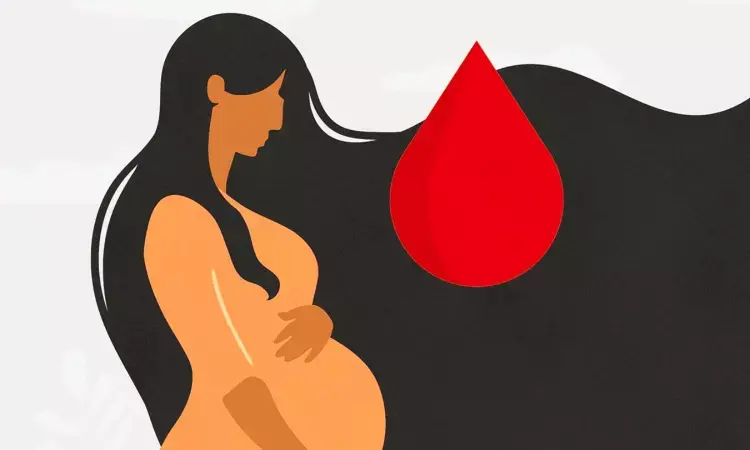- Home
- Medical news & Guidelines
- Anesthesiology
- Cardiology and CTVS
- Critical Care
- Dentistry
- Dermatology
- Diabetes and Endocrinology
- ENT
- Gastroenterology
- Medicine
- Nephrology
- Neurology
- Obstretics-Gynaecology
- Oncology
- Ophthalmology
- Orthopaedics
- Pediatrics-Neonatology
- Psychiatry
- Pulmonology
- Radiology
- Surgery
- Urology
- Laboratory Medicine
- Diet
- Nursing
- Paramedical
- Physiotherapy
- Health news
- Fact Check
- Bone Health Fact Check
- Brain Health Fact Check
- Cancer Related Fact Check
- Child Care Fact Check
- Dental and oral health fact check
- Diabetes and metabolic health fact check
- Diet and Nutrition Fact Check
- Eye and ENT Care Fact Check
- Fitness fact check
- Gut health fact check
- Heart health fact check
- Kidney health fact check
- Medical education fact check
- Men's health fact check
- Respiratory fact check
- Skin and hair care fact check
- Vaccine and Immunization fact check
- Women's health fact check
- AYUSH
- State News
- Andaman and Nicobar Islands
- Andhra Pradesh
- Arunachal Pradesh
- Assam
- Bihar
- Chandigarh
- Chattisgarh
- Dadra and Nagar Haveli
- Daman and Diu
- Delhi
- Goa
- Gujarat
- Haryana
- Himachal Pradesh
- Jammu & Kashmir
- Jharkhand
- Karnataka
- Kerala
- Ladakh
- Lakshadweep
- Madhya Pradesh
- Maharashtra
- Manipur
- Meghalaya
- Mizoram
- Nagaland
- Odisha
- Puducherry
- Punjab
- Rajasthan
- Sikkim
- Tamil Nadu
- Telangana
- Tripura
- Uttar Pradesh
- Uttrakhand
- West Bengal
- Medical Education
- Industry
Methylergometrine alone or in combination with oxytocin favourable first-line drugs for the management of PPH: Study

Maternal mortality due to complications during and following pregnancy and childbirth is reported to be exceptionally high. Approximately, 75% of all maternal deaths are attributed to severe bleeding and infections (mostly following childbirth), high blood pressure during pregnancy (preeclampsia and eclampsia), complications from delivery, and unsafe abortion. Obstetric haemorrhage is responsible for nearly 47% of maternal deaths in India, followed by infections (12%), and hypertensive disorders (7%) due to pregnancy.
Postpartum haemorrhage (PPH) is defined as blood loss of more than 500 ml and 1000 ml after a vaginal delivery or Csection, respectively. It also includes even a small amount ofblood loss that can make women haemodynamically unstable.
The most common causes include uterine atony, laceration, accidental haemorrhage, and abnormal placentation. Factors that increase the risk of PPH include advanced age, assisted reproduction technology, and advanced age-associated co-morbidities. Even though guidelines recommend oxytocin as the first option, experts consider methylergometrine to be the ideal uterotonic in clinical practice in case of either normal vaginal or C-section delivery. The current consensus article aims to provide a collation of evidence-based literature and clinical insights from the experts on epidemiology, risk factors, and predictors of PPH. The article also provides a consensus on the role of methylergometrine (methylergonovine) in the management of PPH.
Methylergometrine:
Indications
1. Delivery of the placenta
2. Routine treatment of uterine atony
3. Haemorrhage and uterine subinvolution
4. Control of uterine haemorrhage in the second stage of labour after delivery of the infant’s anterior shoulder
Methylergometrine causes a rise in the tone, amplitude, and rate, of rhythmic contractions by acting directly on the uterine smooth muscles. Thus, it shortens the third stage of labour and reduces blood loss by inducing a fast, and sustained tetanic uterotonic effect. It has a rapid onset of action after administration by IV (immediate), IM (2-5 minutes), and after oral (5-10 minutes).
Methylergometrine is contraindicated in the following conditions: 1. Hypertension 2. Toxaemia 3. Pregnancy 4. Hypersensitivity
Methylergometrine is among the first-line drugs for the PPH management after both normal or C-section delivery. Patients with hypertension, cardiovascular disease, or medication hypersensitivity shouldn't take methylergometrine. It demonstrates few side-effects or contraindications compared to the other drugs. Some experts prefer IV methylergometrine, while a few of them prefer IM methylergometrine; adding IV methylergometrine with IM methylergometrine also provides good results. Nausea and vomiting are usually seen after 3-4 minutes of methylergometrine administration in C-section patients. This suggests that methylergometrine may not be the only cause of nausea and vomiting and that other factors may also contribute to it during the C-section.
Globally, the major reason for maternal morbidity and mortality is PPH. However, adequate care and treatment can help reduce the mortality rate. The most common cause of PPH is uterine atony. Experts suggest that uterotonics are the first-line treatment for PPH prevention and treatment. Guidelines suggest oxytocin as the first-line medication, experts consider methylergometrine to be used for preventing PPH. Methylergometrine can be given in the IV but is limited to IM form. It has proven to have a superior safety profile in routine practice as compared to other uterotonics. Methylergometrine should only be avoided in patients (20– 25% of the population) who have both anaemia and hypertension. Consequently, methylergometrine is the preferred uterotonic for the vast majority of people. It can be administered either individually or in conjunction with oxytocin to treat PPH. Therefore, the current article suggests that methylergometrine is an efficacious, safe, and cost-effective treatment for PPH management.
Source: Dhore et al. / Indian Journal of Obstetrics and Gynecology Research 2025;12(3):392–399
MBBS, MD Obstetrics and Gynecology
Dr Nirali Kapoor has completed her MBBS from GMC Jamnagar and MD Obstetrics and Gynecology from AIIMS Rishikesh. She underwent training in trauma/emergency medicine non academic residency in AIIMS Delhi for an year after her MBBS. Post her MD, she has joined in a Multispeciality hospital in Amritsar. She is actively involved in cases concerning fetal medicine, infertility and minimal invasive procedures as well as research activities involved around the fields of interest.


